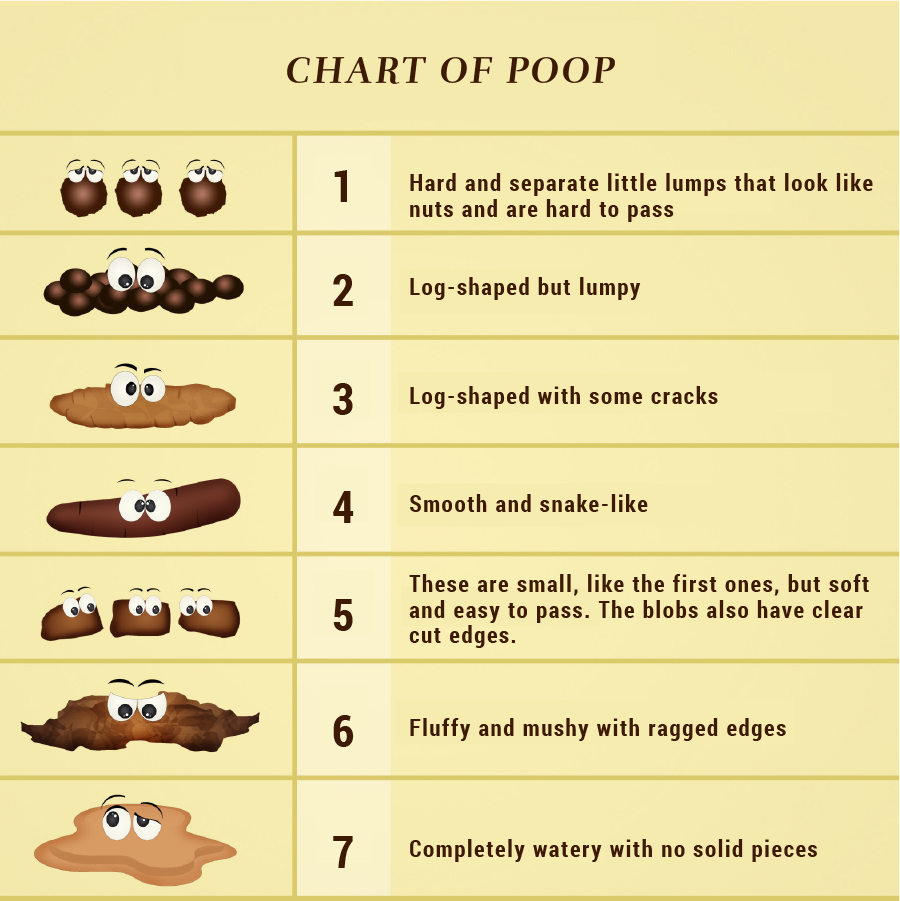The scoop on poop
Chasing the perfect No:2
Is it a coincidence that the smiling poop emoji is a triangular pile, almost like a soft-serve ice cream swirl? I think not. To my analytical mind, there is an underlying truth here. What, exactly, is a perfect poop? To answer this, one must go back into the history of No. 2 since the dawn of man.
For tens of thousands of years prior to recorded history, humans consumed a diet consisting largely of fruits, nuts, roots, vegetables, with some animal protein thrown in. Basically, we ate whatever was available at the moment. This diet was inevitably high in indigestible fiber and, as a consequence, we rarely had any problems with our bowels.
Fast-forward a few thousand years, however, and we see that modern life has brought with it many blessings and not a few curses. Two of the latter are constipation and diverticulosis. The standard American diet (SAD) is low on fiber and fluids. Indigestible fiber helps to retain water in the material going through the large intestine, which results in a soft, bulky stool. Stool is propelled by muscular contraction of the large intestine much more efficiently when it is bulky and soft than when it is small and hard. When the stool is hard and small, much greater pressure within the bowel is required to move it and this pressure has the potential to blow out small pouches of the mucous lining through weak spots in the wall of the intestine where blood vessels penetrate it. Think of those squeeze dolls where the nose and ears bulge out when you squeeze the body.
These pouches of mucous lining are called diverticuli. Diverticulosis is a condition in the large intestine where there are one or more of this outpouchings. Complications of diverticulosis can be serious and even fatal. Diverticuli can become inflamed or infected, a condition called diverticulitis. They can perforate, precipitating an emergency need for exploratory surgery. They can bleed profusely. They can cause scarring and narrowing of the bowel, with subsequent blockage. It is not an exaggeration to call the situation a time bomb waiting to go off.
Diverticulosis used to be thought of as a concern primarily of the elderly. No longer. The incidence in younger people has increased dramatically in the recent couple of decades. Recent studies have shown that one-third of people age 50 have diverticuli and, by 60, the incidence is over 50 percent. Once you have them, you have them forever; they do not go away unless you surgically remove the bowel that contains them. People with diverticulosis may experience complications from their diverticuli at any time. Diverticular disease accounts for 300,000 hospital admissions annually, at a direct cost of more than $2.4 billion.
Regularity is overrated
Much is made of being “regular” with one’s bowel movements. In the popular television comedy series “The Big Bang Theory,” the character of Sheldon Cooper, played by Jim Parsons, has his daily bowel movement like clockwork every morning at 8:20am. Unfortunately, real life is not so structured. Most people are not nearly so regular. Our bowel habits vary with our diet, physical activity, general health, and even our particular social situation. Regularity is overrated. What is more important is the character of our bowel movements.
In third-world countries, the typical diet is much higher in plant matter and indigestible fiber, making the stool relatively soft and very bulky. A daily bowel movement is the rule rather than the exception, and many people will have more than one movement per day. In contrast, in the United States, a bowel movement every three days is not unusual and people with chronic constipation may not move their bowels for nearly a week at a time.
What is the perfect poop? The late Dr. Ken Heaton, of the University of Bristol, devised a scale of poop divided into seven different forms. No. 1 consists of small, hard pellets, which are very difficult to pass. No. 7 is basically watery diarrhea. In between are various gradations of firmness. The ideal poop is regarded as No. 3 or 4. Both are described as “sausage-like” in some way, are bulkier, and tend to be soft but formed.
The bottom line (pun intended) is that you should not have to strain to have a bowel movement.
Beware of colonics
There are many misconceptions about poop and our large intestine. One of the more bizarre is the claim, by some naturopaths and other alternative medicine practitioners, that our large intestines harbor up to 20 or more pounds of stool at any moment. This material supposedly sits there putrefying and producing all sorts of toxic substances, which are never clearly spelled out, that get into our bodies and wreak havoc on our health. This is, to put it bluntly, a load of crap, and reflects an abysmal and, perhaps, willful ignorance of normal bowel function. How much matter may be in our large intestine at any one time is arguable and undoubtedly variable but it doesn’t stay there. Our intestines are highly efficient in keeping things moving through and self-cleansing and do not need our help except in the most unusual situations, such as a true bowel obstruction.
Some alternative medicine practitioners advocate regular colonic cleansing through the use of enemas or “colonic” procedures. Unlike enemas that simply instill a small amount of fluid into the rectum, colonics instill vastly larger amounts of water with or without additives to flush out the entire large intestine. Not only is there no evidence that this is beneficial, there have been instances of bowel perforation and serious imbalances in blood levels of various electrolytes from administering colonics. People have died from colonics. They are bad news. Stay away from them and from those who promote them.


